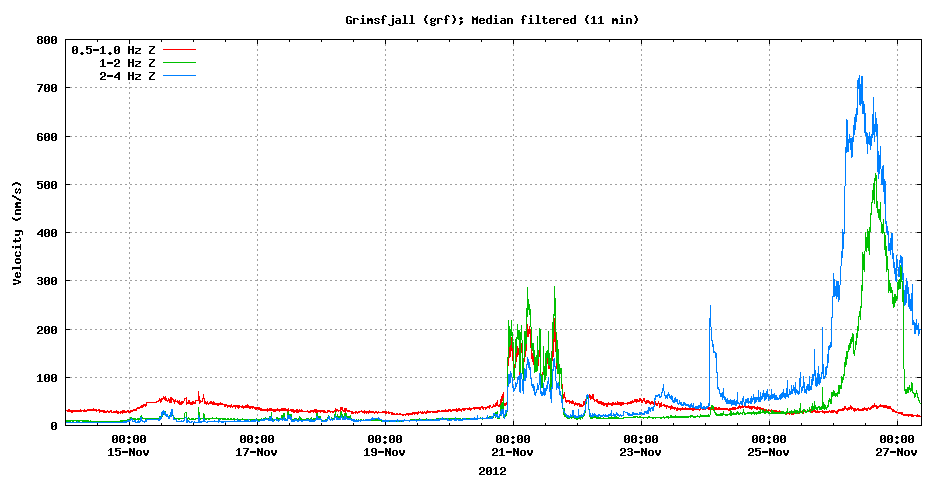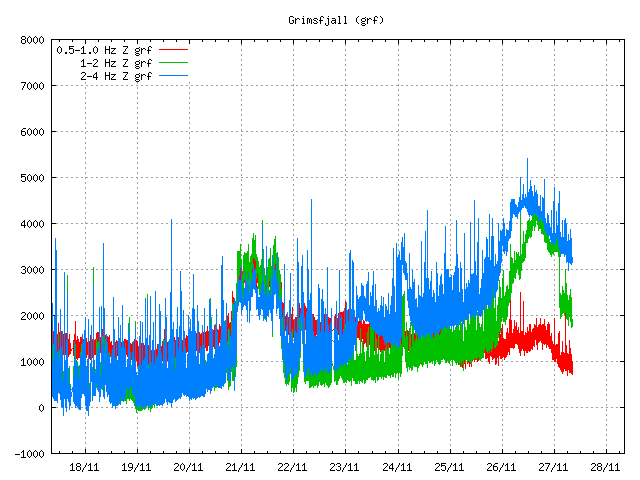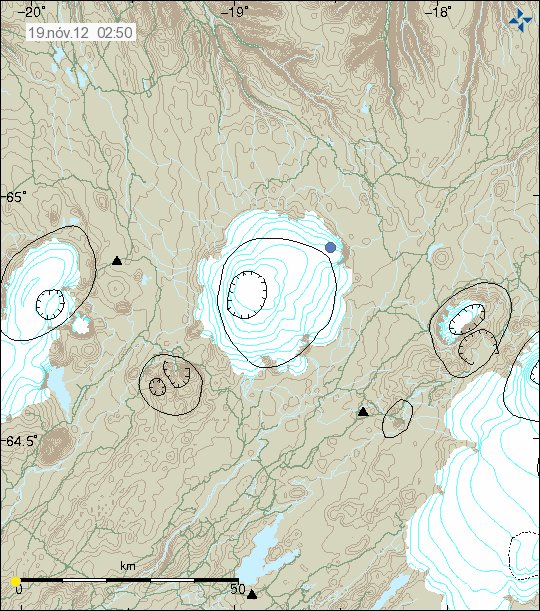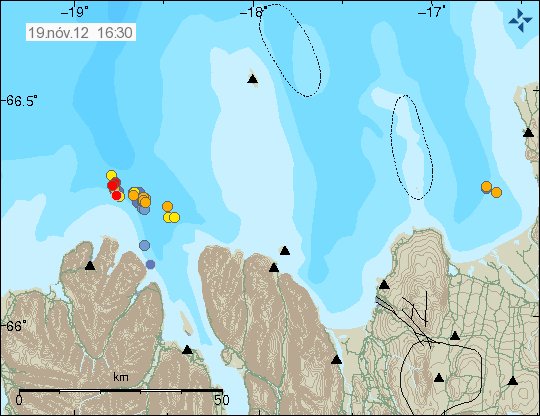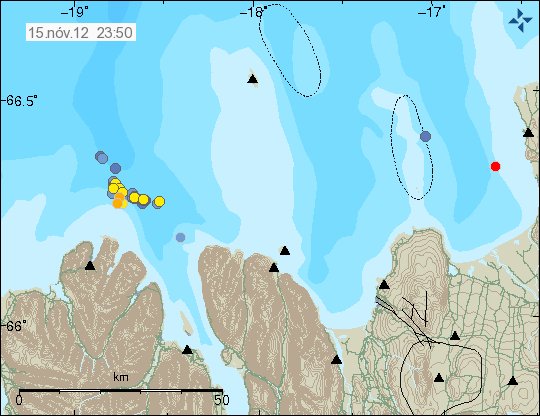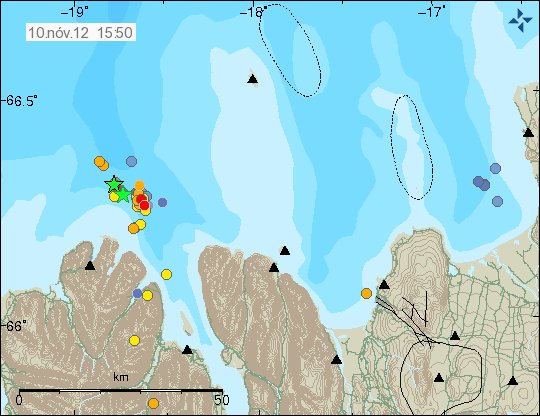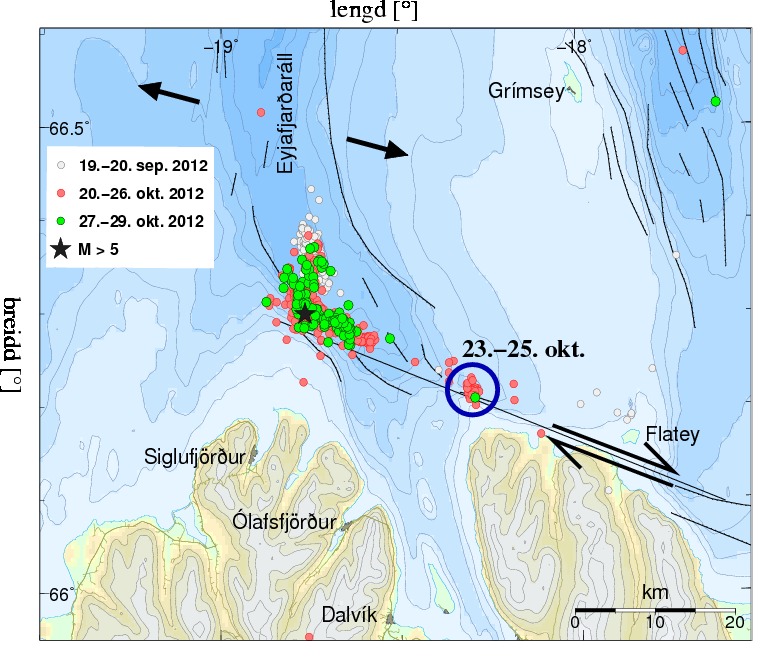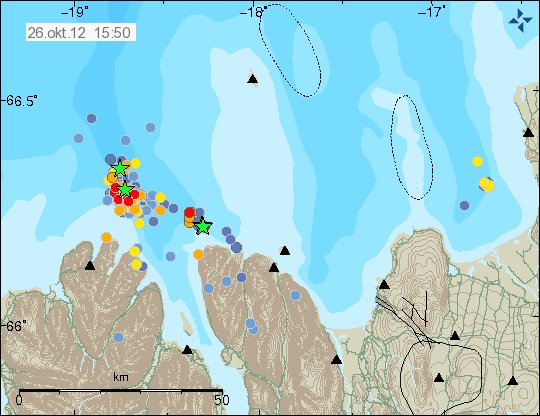Here is a short update on activity in Iceland for the past few days.
Tjörnes Fracture Zone
Earthquake activity continues in Tjörnes Fracture Zone. But this earthquake activity has been ongoing since 20 October, 2012. Every once in a while a magnitude 3.0 earthquake takes place, or larger. The risk of large earthquake taking place in this area remains. General alert for this area is also in effect because of this danger of large earthquake taking place in this area.

The earthquake activity in TFZ. Copyright of this image belongs to Icelandic Meteorological Office.
Katla volcano
Winter has come. At least when it comes to earthquake activity in Katla volcano. But little to none earthquake activity is now taking place in Katla volcano. Earthquake activity is now well below background level. It can be expected that current status is going to remain in Katla volcano until next summer.

Earthquake activity in Katla volcano for the past few days. Nothing important is taking place in Katla volcano as this image clearly shows. Copyright of this image belongs to Icelandic Meteorological Office.
Askja volcano
While Katla volcano is getting quiet. It seems that Askja volcano is getting slightly more active. But earthquake activity in Askja volcano during the past few weeks suggests a minor magma intrusion (dike intrusion) might have taken place. But none of the earthquakes that took place where above magnitude 2.0 in size.

Earthquakes in Askja volcano during the past few days. Copyright of this image belongs to Icelandic Meteorological Office.
I do not think this earthquake activity in Askja volcano means it is getting close for an eruption. Since there are no signs in that direction at the moment. But this earthquake activity is interesting. What ever it means in the short term for Askja volcano. It is also common that volcanoes have earthquake activity without anything happening at all following such earthquake activity.

